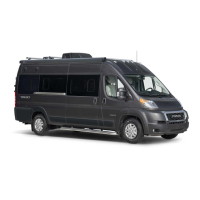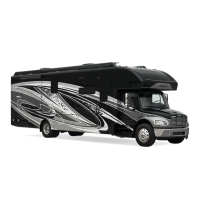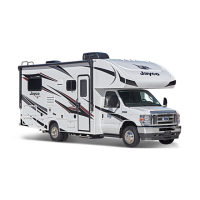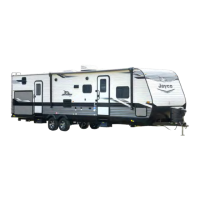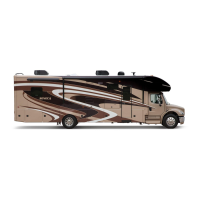53
Fresh Water System
All water contains contaminant and mineral particles that can cause fresh water system
odors. Untreated well water is a major source of water system odors. The fresh water (po-
table water) system needs periodic sanitization to take care of all the components in the
plumbing system to discourage the growth of bacteria and other organisms that can con-
taminate the water supply.
Do not remove the potable water label from your recreation ve-
hicle.
You should use a non-toxic drinking water hose dedicated only to
supplying the recreation vehicle with fresh water. To reduce the
chance of contamination, prevent the non-toxic drinking water
hose from coming into contact with the ground.
DO NOT drink water deemed microbiologically unsafe or of unknown
quality.
Avoid traveling with full fresh, black or grey water holding tanks. The
weight of holding tank contents in not calculated into the RV cargo car-
rying capacity. Traveling with full tanks could cause you to exceed the
individual tire ratings and/or the RV GAWR or GVWR. Traveling with
full tanks can also aect your vehicle handling characteristics.
Plumbing System
There are two dierent water systems in your recreation vehicle:
The fresh water system consists of the fresh water holding tank, faucets and con-
nections, water pump, water heater, tub/shower. On some models, it may also
include the water purication system or outside shower assembly (if so equipped).
Depending on your model, the waste water system consists of the wastewater and
sewage holding tank(s), drains and toilet. Models with a cassette toilet will only
have the wastewater system.
Check all ttings, pressure and waste, for leaks before each trip or before vehicle
storage as part of your normal maintenance:
Inspect all faucets, the water purication system (if so equipped) and sink connec-
tions (including drain baskets or lters).
Inspect connections at the water pump and water heater (if so equipped).
At the end of every trip, you should drain any unused water from the fresh water
system.
Typically, there are labels axed to the exterior of the recreation vehicle sidewall that in-
dicate the locations of the water system drains and lls. Be aware some drain valves may
be located inside the vehicle (once the exterior label is found, go inside to nd the drain
corresponding location).
Refer to the manufacturer’s operating manual included in your warranty packet for the de-
tailed operating, sanitizing, and winterizing information for each water system component.
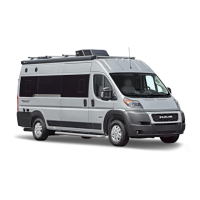
